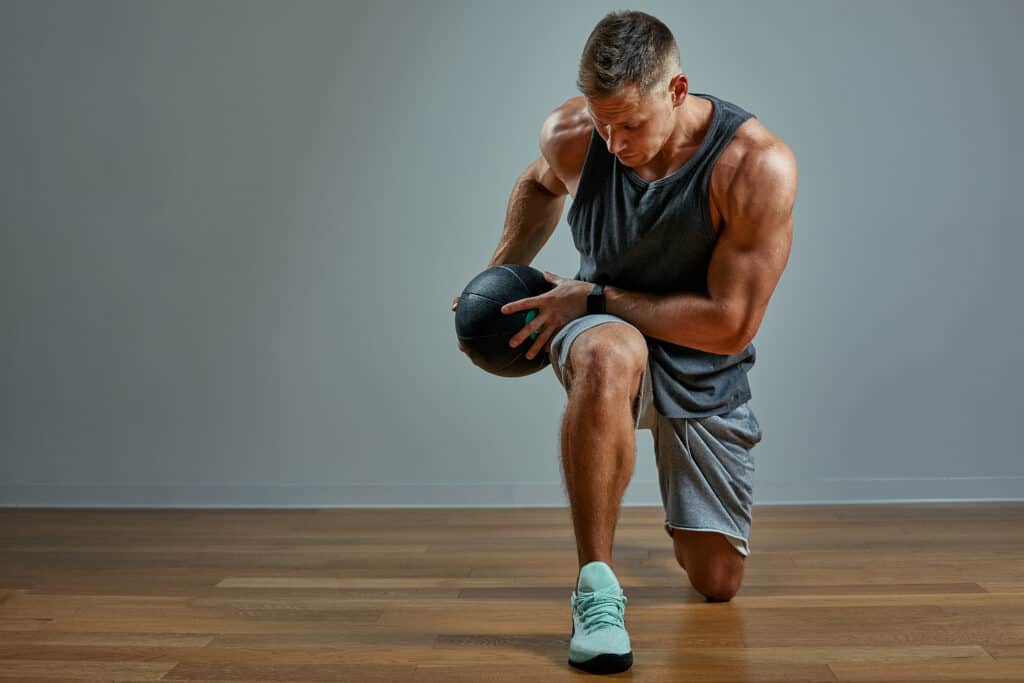First, what are biomarkers? They include hundreds of different metrics that basically offer insight into how your body is managing the aging process. A few examples include, blood pressure, muscle mass, aerobic capacity, heart rate, blood profile, and different genetic tests. In fact, these metrics, or biological markers, can be broken down into various categories.
Let’s look at a few of the suggested markers from the book, Biomarkers: The 10 Determinants of Aging You Can Control by Bill Evans, PhD and Irwin Rosenberg, MD. The focus their research is on ten biological markers that would be interesting to individuals like you who exercise. The following list includes three of the ten biomarkers discussed in their book.
Muscle Mass: A Very Important Biomarker
This is at the top of their list for good reason, maintaining muscle mass as you age is critical for functionality. This first and second biomarker go hand-in-hand and you know the importance of both (beyond just looking good). Let a month go by without strength training and see what happens to that mass mass and strength level of yours. Our body, sadly, begins to detrain in as little as a few weeks.
If you don’t strength train on a regular basis you’re basically an accident waiting to happen. Further, you will become part of the statistical group that loses approximately 5-8 pounds of metabolically active lean muscle mass each decade starting around age 35. Researchers Evans and Rosenberg have said “the first biomarker, muscle mass, is responsible for the vitality of your whole body.”
Maintaining Strength
It’s important to understand that maintaining both muscle and strength as you age is really important. When someone strength trains for the rest of their life they end up maintaining or improving many of the other biological markers. When muscle mass and strength decrease, so will other biological markers.
With the loss of muscle mass comes the loss of strength and power. Strength appears to peak between ages 25 and 35 and maintained (or decreases slightly) between ages of 40 and 59. Strength levels declines by 12-14 percent per decade after age 50, according to research. The good news is that engaging in regular strength training preserves both strength and muscle mass. This is no more evident than in the photo below of 40 and 70-year old athletes (hint: they have roughly the same amount of muscle mass 30-years apart).

Basal Metabolic Rate
The third biomarker, basal metabolic rate or BMR, is interrelated with the first two metrics on the list. Basal and resting metabolic rates (also known as BMR and RMR) are basically an estimate of the amount of calories your body needs to function properly while at rest. It represents the minimum amount of energy (calories) needed for your heart to beat, for your lungs to function properly and to maintain a normal body temperature. Metabolic rate is typically 6-10 percent lower in women compared to men. Metabolic rate is also affected by age, exercise, stress, temperature, hydration, high altitude, sleep and frequency of meals. Regular exercise, especially strength training, has been shown to slow down the natural decrease of metabolism with age.
These are just three of the of the many hundreds of biological markers available to monitor. Regular strength training will have short and long-term impacts on each of these biomarkers. Just a few more reasons to stay strong!
Stay Strong Together
Jefit, named best strength training app by Sports Illustrated, Esquire, GQ, Men’s Health, Greatest, Forbes Health, and many others. We offer a community responsible for 92,000,000 workouts to date! The app, which recently passed 10 million downloads, comes equipped with a customizable workout planner and training log. The app also has ability to track data, offer audio coaching cues, and can share workouts with friends. Visit our members-only Facebook group. Connect with like-minded people, share tips, and advice to help get closer to reaching your fitness goals.
Read the scientific paper published in the Journal of Medical Internet Research using the Jefit app.
- Boost Your Posterior Strength with 3 Effective Jefit Exercises - March 31, 2025
- 8 Underrated Stretches to Improve Your Deadlift Performance - March 28, 2025
- Strength vs. Hypertrophy: Best Way to Train for Your Goals - March 26, 2025
